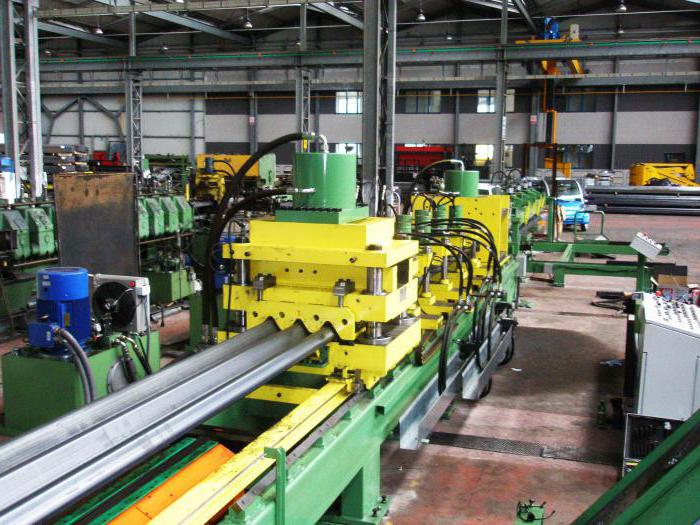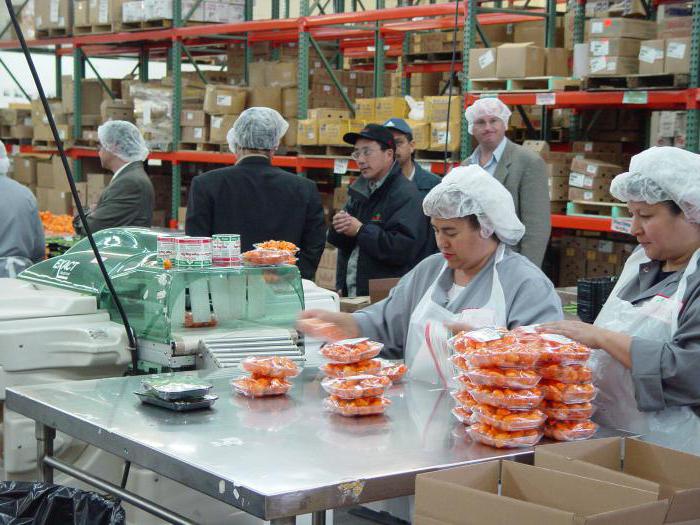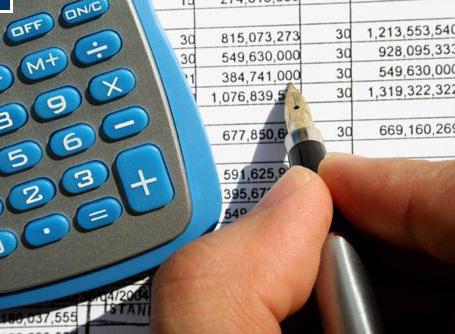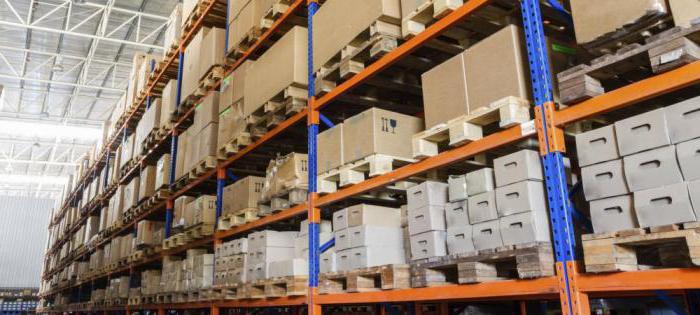Account 29 is used by manufacturing enterprises that own their own service farms. Here information is collected about the costs that arise in the process of manufacturing products or performing work (rendering services), which are necessary for the organization's core business. For what purpose service farms are created and how to record them, we learn from the article.
Concept and purpose
The production structure of any industrial enterprise is based on the interconnection of its divisions. This includes affiliates and subsidiaries, representative offices and branches, as well as individual product lines. Among them, large industrial units (plants) are distinguished, as well as its component parts - departments (shops), sections, brigades. The production structure may include a service farm. Its units do not participate in the creation of products for sale, but provide for the needs of the main and auxiliary production.

The main task of the service sector is to ensure the continuous and optimal functioning of the auxiliary and main production, by satisfying various industrial needs. If necessary, its workshops can take part of the orders. This sometimes happens when equipment breaks down or when it is necessary to make increased deliveries of products.
The composition of the service industry
This industrial unit plays an important role in the processes of product execution for the main activity of the enterprise. The service industry is able to provide semi-finished products, materials and various services to all other departments. Usually this unit consists of:
- Transport workshop - provides services for the transportation of goods, equipment, refineries and other material assets necessary for the production. The important thing is that transportation is carried out only within the enterprise. The structure can be divided into sections (operational, dispatch, repair, etc.).
- Sales and supply services - provides necessary facilities, equipment, carries out work on the disposal of materials and other valuables that are not suitable for use. Carries out sales of unclaimed MPZ.
- Warehouse facilities - saves and collects materials and equipment, which in the future may be useful to the main or auxiliary production.
- Household premises and catering departments.

In addition, many large industrial enterprises have their own socio-cultural complex, consisting of children's institutions (camps, kindergartens), cultural houses or recreation centers, hostels for employees. The costs of maintaining such premises up to utilities are also reflected in the part of the costs of the service industry.
Account 29
A large amount of information about the activities of the service sector involves the allocation of a separate account to collect data and record them in accounting. Section III of the Model Chart of Accounts contains 29 accounts, which serves for such purposes. It has an active structure, because it is reflected in the balance sheet assets. In the process of conducting business transactions, entries take place that in the debit mean an increase in direct costs for the activities of the service industry, and in the credit - their write-off, distribution by articles.

This account, like other accounts of section III, accumulates expenses for the period. At the end of the month, amounts are debited to the debit of other accounts. Thus, a balance at the end of the period is not formed.Account 29 has a distinctive feature - it takes into account only direct costs that are associated with the direct functioning of serving farms and units.
Analytical accounting
Serving production can consist of many divisions. The activities of each of them should be documented. For these purposes, sub-accounts of 29 accounts are opened, which are intended to collect information on a specific site and for similar purposes. The company may keep records regarding the service sector in the following analytical accounts:
- 29/1 “Housing and Utilities” - to account for the costs of maintaining housing facilities (dormitories, utilities) on the balance sheet of the enterprise;
- 29/2 "Subsistence agriculture" - collection of costs aimed at fattening poultry or livestock, rearing agricultural crops;
- 29/3 “Domestic service” - to account for the costs of maintaining household organizations and its personnel (baths, hairdressers, laundries, etc.);
- 29/4 “Preschool institutions” - collection of information on the costs of preschool institutions;
- 29/5 “Maintenance of sanatoriums and other health-improving institutions”;
- 29/6 "Cultural institutions" - to account for the costs of maintaining the palaces of culture belonging to the enterprise and the costs of entertainment events;
- 29/7 "Catering departments" - the maintenance of canteens, buffets on the balance sheet of the enterprise.

Analytical accounting of costs of production, implementation of works (rendering of services) by service units should be organized separately for each type of activity.
Debit Account 29
The reader already knows that score 29 is active. This means that any receipt of funds will be reflected in the debit. In this case, the receipt is considered to be the formation of new costs of the service industry. Here indicate the direct costs that have arisen in connection with the performance of work or the manufacture of products for their own needs. The amounts of used materials and other valuables are debited from the credit of their accounts in debit 29. The costs of auxiliary production, if any, are also written off by posting Dt 29 Kt 23.

It is worth knowing that general running costs, arising from the manufacture of products or the provision of services (performance of work) are not included in the direct costs of the service industry if they were intended for their own needs (with the exception of construction and overhaul). If the result of the activity was transferred to a third-party organization, then part of general business expenses is attributed to direct costs of the servicing production: Dt 29 Kt 26.
Credit account 29
The costs of production or the performance of work by the service industry should be taken into account in the financial result of the enterprise. They are written off on the credit of account 29. In addition, this part also takes into account the amount of the actual cost of goods produced or services rendered.

Account 29 “Serving industries and farms” at the same time interacts with the accounts of inventory materials or unit costs. If the results of operations are aimed at selling to a third party, then the amounts are written off to the debit of account 90.
Typical account transactions 29
Having understood the principle of interaction of account 29 with other accounting accounts in the process of conducting business transactions, we can begin to consider standard transactions.
| Dt | Ct | Description of the business transaction |
| 29 | 71 | Costs of servicing production are written off to the accountable person |
| 29 | 28 | The cost of production includes losses from defects made by the service sector. |
| 45 | 29 | Products manufactured by the service industry are shipped to a third-party enterprise |
| 90.2 | 29 | Written off the cost of sales manufactured by the service industry |
| 80 | 29 | Incomplete production of the service sector is fully transferred to the member of the partnership |
| 97 | 29 | Maintenance costs are included in future expenses. |
| 29 | 11 | Charged off the cost of young animals used for the needs of the service economy |
Example of posting to account 29
Consider a situation in which an enterprise maintains a children's recreation camp. Gradually, cost items will be formed that will need to be reflected in accounting data. For example: According to the results of the first shift of children's rest, the following expenses occurred:
- depreciation of fixed assets in the amount of 3200 p .;
- use of utilities - 21 000 p. (VAT 3784 p.);
- salaries to staff - 100,000 p .;
- assessed contributions - 22,000 p.
Account 29 will be replenished with the following entries:
- Dt 29 Kt 02 at 3200 p. - reflected the amount of depreciation of camp property;
- Dt 29 Kt 60 at 17,216 p. - Utility costs included (excluding VAT);
- Dt 19 Kt 60 on 3784 p. - accepted for accounting of VAT on utility bills;
- Dt 29 Kt 70 per 100,000 p. - accrued wages to camp staff;
- Dt 29 Kt 69 for 22,000 p. - The amount of contributions to extrabudgetary funds has been posted.
Accounting for production costs (in this case, the provision of educational and recreational services) was reflected in the debit of 29 accounts. The final result will be debited to account 91.
Service of own production
What will the postings look like if the servicing production works to provide the main or auxiliary production with the necessary materials or other means? Reflecting operations of this type is quite simple. For starters, you should include in the debit of account 29 the costs associated with the process of manufacturing products at the service plant (cost of materials, wages, electricity consumed, etc.). After the completion of the process, all accumulated costs in connection with the performance of this task are written off to the debit account of the account of the main or auxiliary production.

29, the accounting account is used to reflect information on the activities of the service industry or economy, which sometimes forms a large complex of units of various kinds. After accumulation in the debit of the account, expenses are subject to write-off depending on the nature of their occurrence. The account closes, and from the new month everything starts anew.








